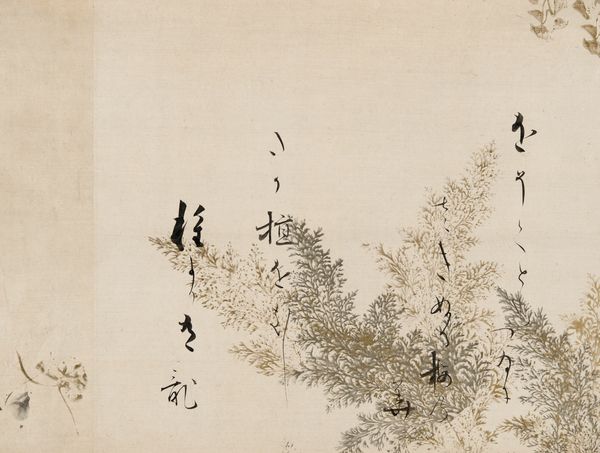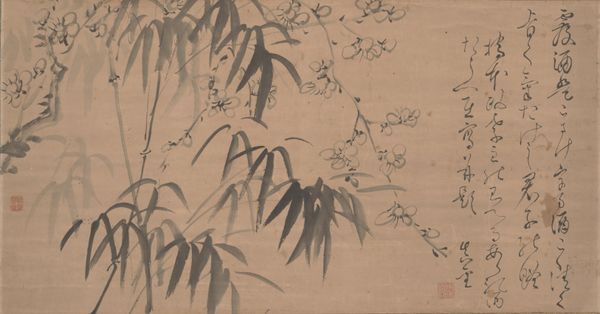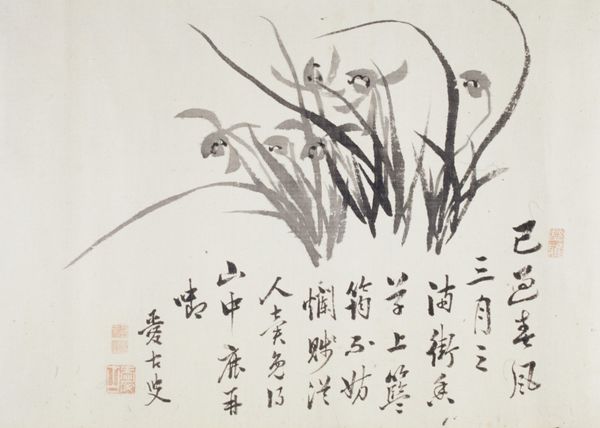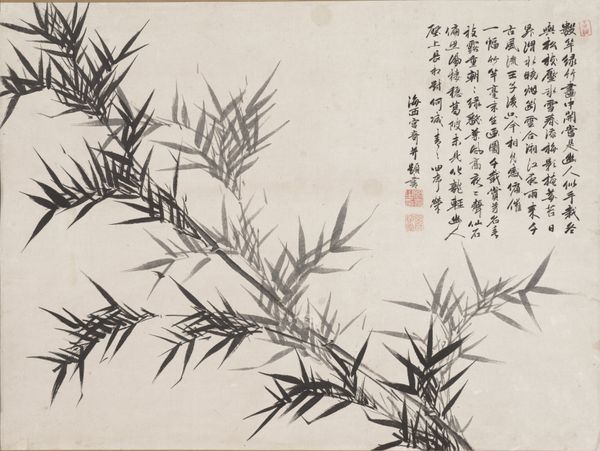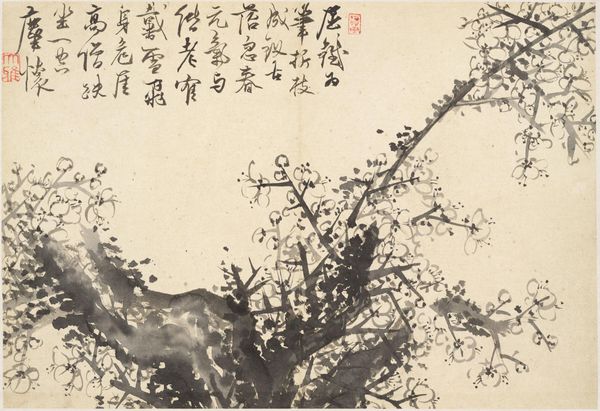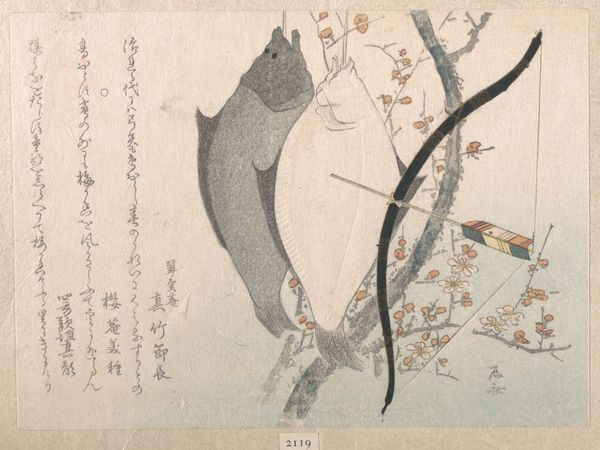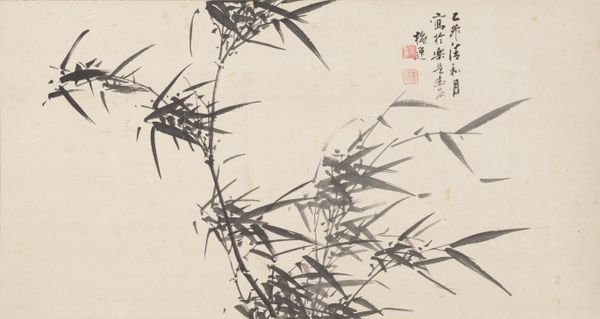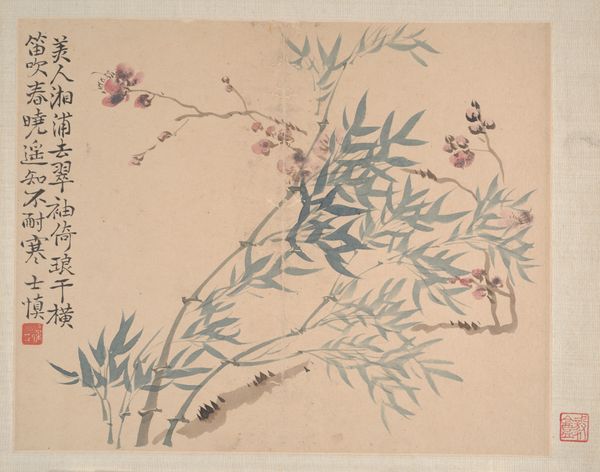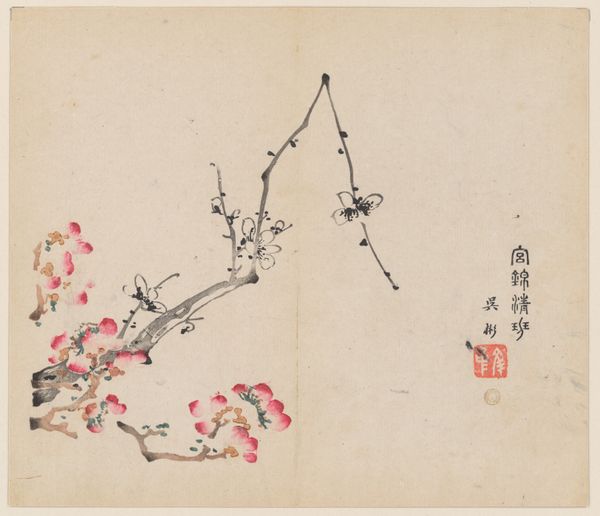
drawing, hanging-scroll, ink
#
drawing
#
asian-art
#
landscape
#
ukiyo-e
#
japan
#
hanging-scroll
#
ink
#
line
#
calligraphy
Dimensions: 10 1/8 × 12 1/16 in. (25.72 × 30.64 cm) (image)47 7/16 × 18 5/16 in. (120.49 × 46.51 cm) (mount, without roller)
Copyright: Public Domain
Curator: Shrimp, from 1864, rendered with ink on a hanging scroll. It’s by Kinoshita Itsuun, and is here at the Minneapolis Institute of Art. My initial impression is… stillness. It's surprisingly tranquil, isn't it? Even with creatures that are constantly flitting about in nature. Editor: Yes, there’s a minimalist elegance. The space around the shrimp almost vibrates. I see how the scroll format contributes, too, lending the work a vertical, even stately quality. For me the cultural connotations resonate deeply: shrimp in Asian art are a very common symbol of good fortune, abundance, and longevity because of their bent backs. The more ancient you are the more your spine curves and that has translated into their form symbolizing wisdom, and that comes from time and fortune and experience. It's this beautifully compressed visual metaphor. Curator: Ah, so each brushstroke is laden with symbolic meaning. Do you feel like this specific composition tells a particular story, then? Or offers a unique take on a traditional image? I think it looks to me more like a study of capturing the play of light. I see so many layers on this shrimp that appear only to capture different refractions of light as it might hit water. It makes it very temporal, like the artist could not capture that specific instance again even if they wanted to. Editor: Well, I am less familiar with capturing of the play of light and how one sees that in particular artists' works. It strikes me, also, the presence of calligraphic text and signature as integral to the overall image, rather than separate or secondary. Text as a kind of… abstract symbolic landscape in itself. The shrimp in their natural habitat of vegetation seems symbolic of humans in the greater context of nature itself. They cohabitate without friction, or the implication of disruption that could easily exist. Curator: You're making me rethink my quick first impression, I have to admit! Especially what you point out about the balance of nature here. These figures rendered in what seems to be so little effort but clearly is incredibly thought out - they take on new life when considering these interpretations. It adds layers. Editor: Exactly! Every detail pulses with significance, drawing from centuries of cultural memory and artistic evolution. In some sense it does not surprise that they coexist since they also act as food for one another, which can come across as a very basic and practical sentiment to consider about artwork that goes beyond this topic, yet the imagery, for me, always comes back to basic tenants. Curator: All of it makes for a very concentrated visual and symbolic language, doesn't it? The longer you sit with it, the more it unfolds, even from just a few brushstrokes. Editor: Agreed. It is one of the delights of studying imagery: unlocking how cultures reflect themselves through signs.
Comments
No comments
Be the first to comment and join the conversation on the ultimate creative platform.

